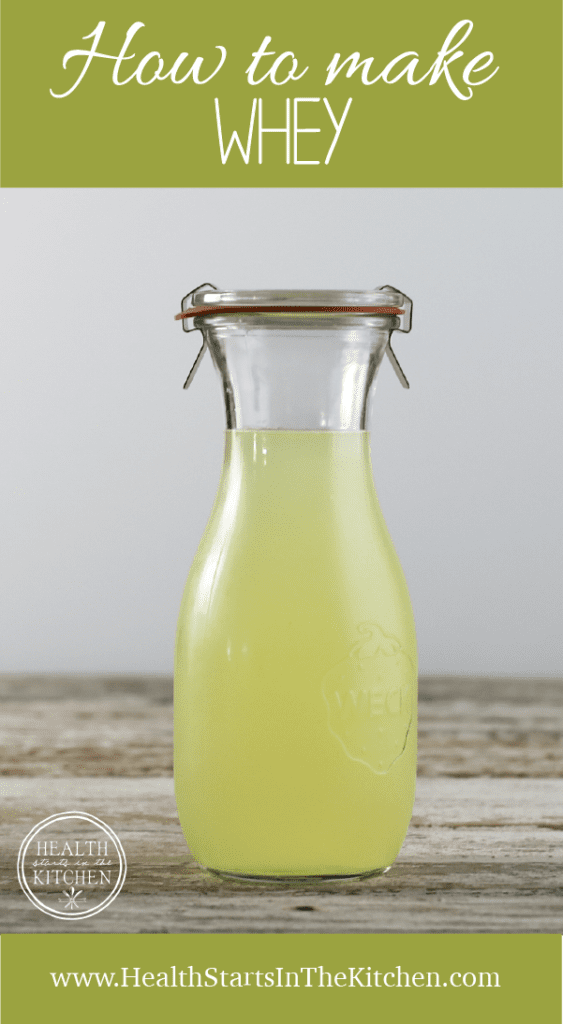How to make Whey

Whey is often called for as a culture starter in foods like lacto-fermented vegetables, beverages, and grains and flours. It can be obtained from yogurt, kefir, cultured buttermilk, clabbered milk, and some cheeses.
Whey is full of the beneficial bacteria and enzymes found in these cultured dairy products. By using whey, the ferment is inoculated with the specific cultures in the whey.
Making whey is easy. The main objective is to remove any dairy solids from the liquid whey so that it isn’t as perishable.
Equipment:
- Bowl
- fine mesh strainer, tight-weave cloth, coffee filter, cotton bag, butter muslin, or greek yogurt maker
Ingredients:
- Cultured yogurt, kefir, buttermilk, or clabbered raw milk
Instructions:
Place the strainer so that it is sitting atop the rim of the bowl, leaving a few inches of space below the strainer. Unless your strainer is very fine mesh, you’ll want to line the strainer with the cloth or coffee filter. Gently spoon the cultured dairy inside the lined strainer. (I use a greek yogurt strainer)

After a few minutes, the whey should begin slowly dripping into the bowl. The whey should be a translucent pale yellow with no white dairy streaks to it.
If you find that the first straining leaves some of the dairy solids in the whey, simply pour the whey through for a second straining.
Note that the strainer or cloth must be very tightly woven in order to keep the dairy solids from dripping through. Coffee filters and tightly woven tea towels generally work the best if you do not have a greek yogurt strainer like I use.

Straining the whey for a few hours results in a soft, easily spreadable cheese of Greek-style yogurt texture (if you use yogurt you will end up with greek yogurt) Straining overnight results in a denser, cream cheese-like texture and yields more whey in the end.
Store whey in a clean jar in the refrigerator, where it should last for months. The cheese can be stored in a separate container for a week or so and used as a cream cheese replacement or as a very thick spoonable snack.








Very informative article about whey. Iill give this a try
Do you have a non dairy version?
the liquid from a non-dairy vegetable ferment (like sauerkraut) can be used as a fermentation agent in place of whey.
Thank you, I make Greek Yogurt every week from a gallon of milk and I pour the whey down the drain because I just don’t know what to do with it. I hope you can give me pointers as to how to work it into my diet.
You can make homemade ricotta!
1) Collect your whey.
2) Put 8 cups liquid whey in a sauce pan and, stirring slowly, heat the liquid whey to 203 degrees F.
3) Take off the burner and stir in 2 Tbsp. white vinegar.
4) Stir for 2 minutes.
5) Allow the whey to cool a little – about 30-45 minutes.
6) The ricotta will begin to form. Drain the liquid off in the same way that you made your Greek yogurt (2-3 hrs using cheesecloth).
7) Voila! You have homemade, fresh ricotta. Add a small pinch of salt to balance the flavors.